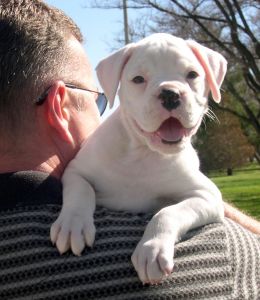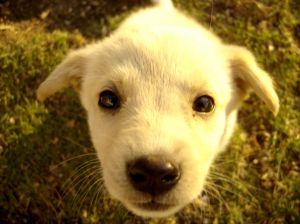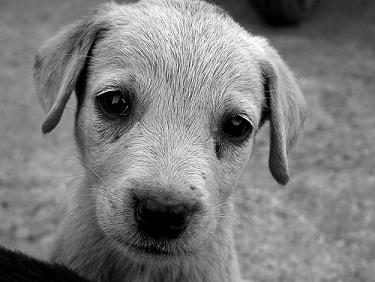Follow This Proven Potty Training Method
Waggs to Riches - The arrival of a new puppy is cause for great excitement in any household. It soon becomes clearly apparent that puppy house training is an urgent priority and the number one thing to teach our new housemates.
You'll find lots of puppy house training articles and theories across the net and in books everywhere, but I'm pleased to say that I've got a method that has never let me down. The potty training technique I have come to rely on and trust requires a fair degree of commitment to begin with but the rewards are quick and last forever. My veterinarian first told me about this potty training method which could be summed up as follows:
Puppy House Training - General Rules
- Owning a puppy is a big commitment for all family members, especially in the first few days and weeks.
- Puppy potty training is not a race, the key is to prevent mistakes and establish good habits early - dogs are creatures of habit.

- From your dogs point of view there is no right or wrong place to go to the toilet, they feel like going and just do it. It is our job to clearly communicate and reinforce where it is acceptable to eliminate and also where it is not acceptable.
- Opening your back door every couple of hours to let your puppy out will not house train your puppy.
- A puppy's natural instinct is to keep their bedding/sleeping area clean - the potty training method outlined below utilizes this knowledge to our advantage.
- No matter how attentive and diligent you are in the house training process there is bound to be the odd slip up. Don't worry about it just ensure that you clean mistakes up thoroughly, including the use of an odor neutralizer to take away any lingering smell.
- My puppy house training strategy involves close supervision and confinement to start with but only so we can allow our puppies greater freedom and much sooner.
- Understand your puppy's capabilities and be realistic, keep in mind you are dealing with a very young animal. Young puppies can only hold on for so long before they need to go, they don't have much control early on. As a general rule a puppy can hold on an hour for every month of his/her age, plus another hour. This means that a 2 month old puppy can be expected to hold on for three hours and at 3 months old this same pup could be expected to hold on for four hours at a time.
- Develop a food and water schedule. Each day feed at the same time (never close to bed time) and take away your dogs water bowl before you go to bed (don't forget to put it back first thing in the morning!). You'll develop a routine this way and "what goes in on schedule comes out on schedule", if you know what I mean...
Physical Punishment Is Never An
Option In The House Training Process!

Puppy House Training - Step by Step Process
This method is for when you are at home with your puppy, follow it as closely as you possibly can.Equipment you'll need:
I prefer to use a good quality crate. Ensure that it is comfortable, safe and the right dimensions for your puppy.
|
In addition to your 60 minute schedule it is important to take your puppy outside after each meal time (most puppies go to the potty within 15 minutes of eating).
That's the puppy house training process, follow it consistently and I'm sure you'll experience pleasing results. When you are not home you will need to set up an area with comfortable bedding, water, toys and a toilet. Place the indoor doggy toilet at the opposite side to the bedding in your puppy's living area. When you arrive home remove the toilet area inside and follow the potty training method detailed above.

Puppy House Training Process - Teaching Your Puppy To "ask" To Go Outside
If you aren't able to install a doggy door it is handy if you teach your dog the right way to let you know he wants to go outside. Do this by hanging a Poochie-Bell on a piece of string attached to the door handle (at the level of your puppy's nose).- Follow the puppy house training schedule as detailed above but now add the following: Each time you get to the door to go outside give the bell a bit of a shake and say "go potty". Do this every time you take your puppy outside to the toilet for a week or two.
- After a week or so when you arrive at the door say "go potty" but don't touch the bell. You want your puppy to give it a nudge, if he does, give lots of enthusiastic praise and quickly open the door. If your puppy doesn't nudge the bell after standing at the door for 10 seconds, shake the bell yourself while saying "go potty".
- Keep trying this procedure every time you go outside until your dog "gets it". With most dogs it doesn't take long at all.
- Eventually your dog will make his way to the door and tap the bell every time he needs to go outside to the toilet.
Teach Your Dog when & where to Go to the Bathroom -- powered by ExpertVillage.com





